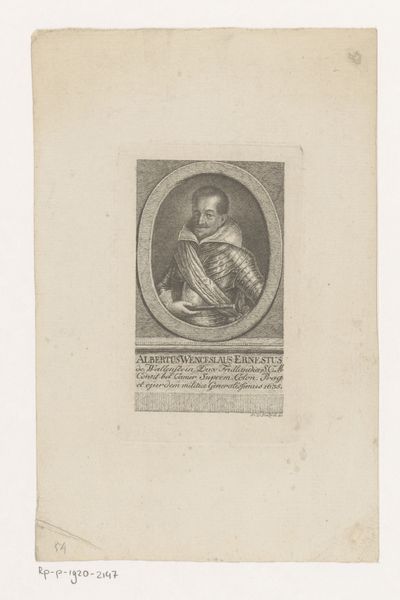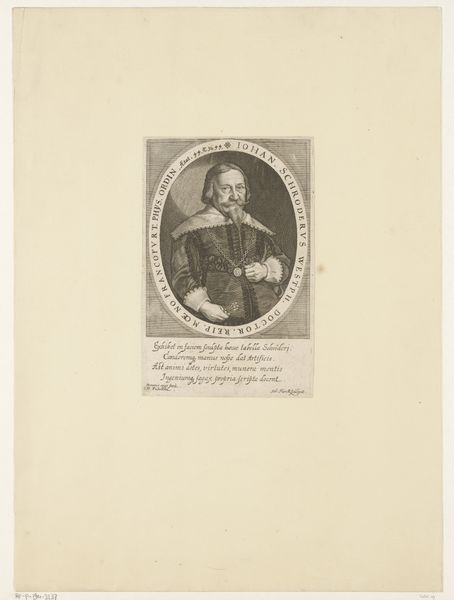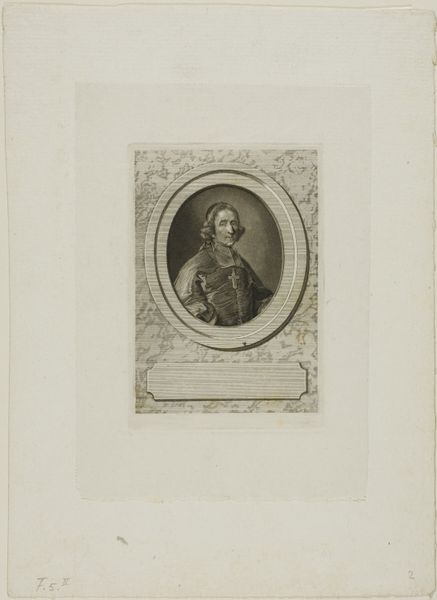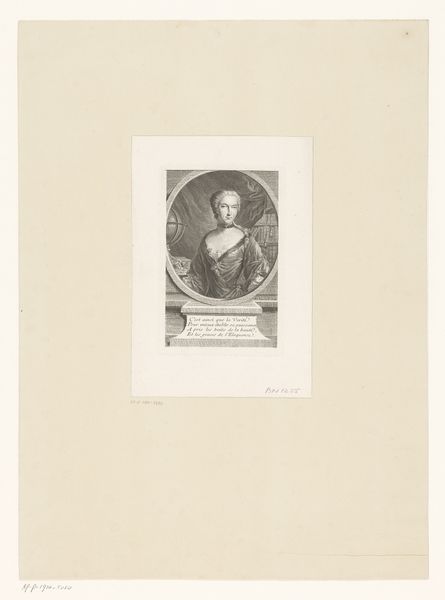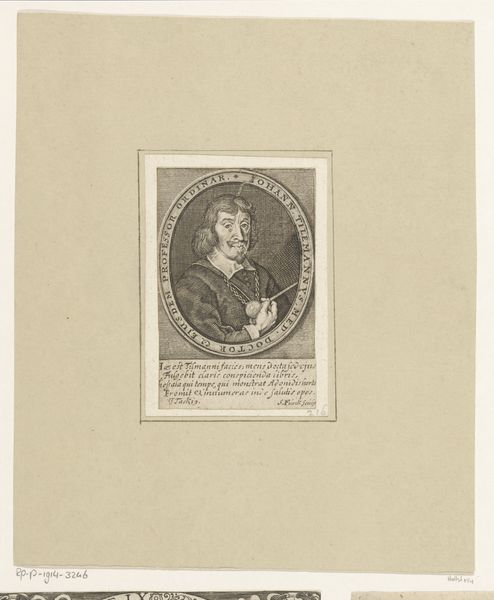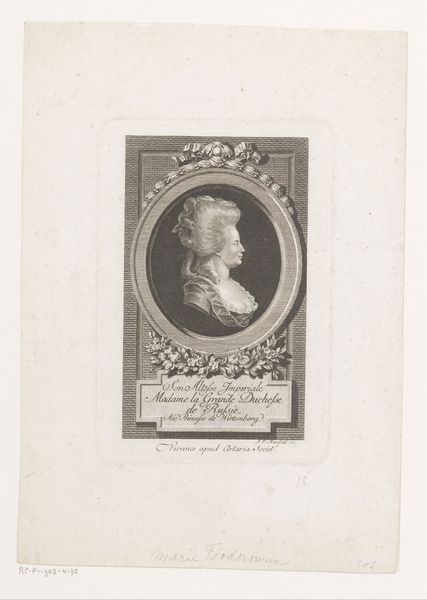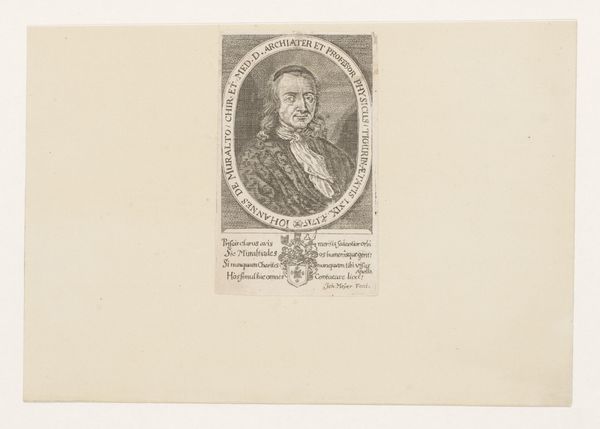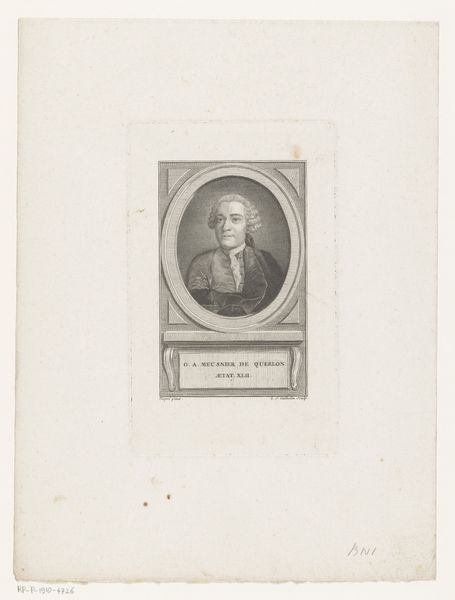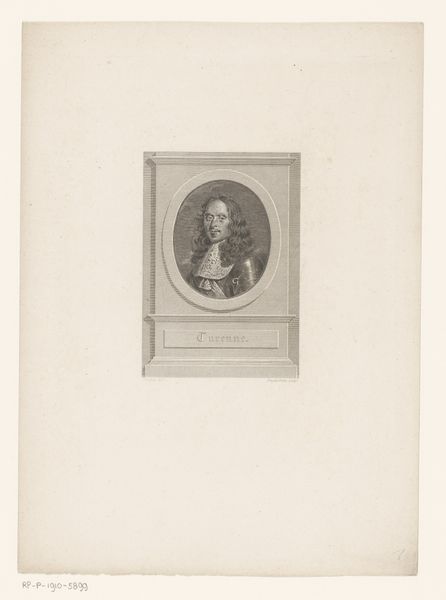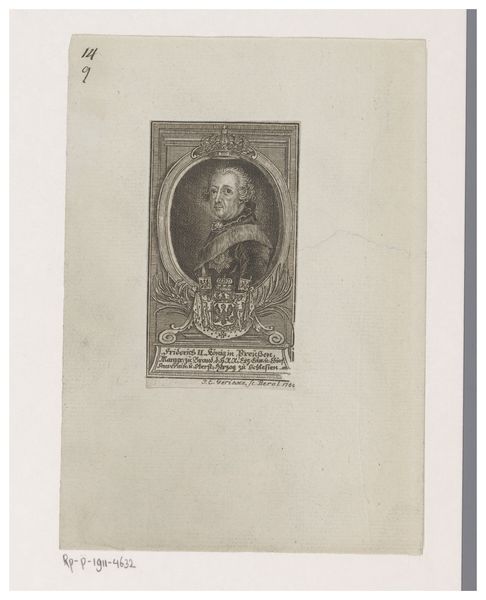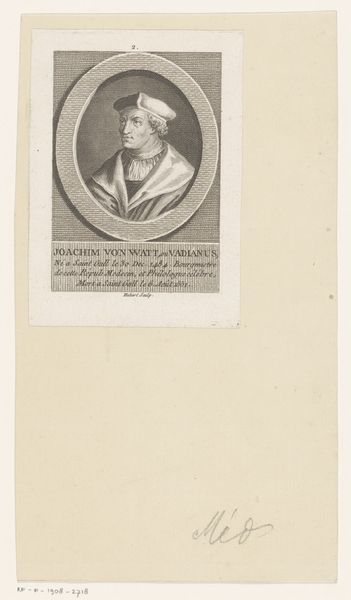
print, engraving
#
portrait
#
baroque
# print
#
academic-art
#
engraving
Dimensions: height 180 mm, width 139 mm
Copyright: Rijks Museum: Open Domain
Curator: Here we have a look at the "Portrait of Johann Georg Dorsch" a piece currently held at the Rijksmuseum, dating roughly from 1690 to 1727 and crafted through engraving. What are your immediate thoughts? Editor: There's a somber gravitas here, isn't there? The oval frame, the draping curtains – they speak to a kind of staged importance, almost a constructed persona. The man holds a book… it feels less about the individual and more about the role. Curator: Absolutely. Images like these were deliberately circulated within academic and theological circles. Johann Georg Dorsch was a prominent theologian. Printmaking allowed for widespread dissemination of his image and ideas, bolstering his influence and reinforcing a specific representation. The printing press allowed the thoughts of figures to disseminate much easier in social, political and economic climates. Editor: The book as a symbol of learning and wisdom, a fairly common trope even now. The frame is interesting: theatrical drapes flanking what seems like a marble ledge. All contribute to creating a visual language. Curator: The symbolic trappings reinforce status and respectability, yes. Notice, too, how the text below acts as a biographical inscription. Engravings such as this weren't purely aesthetic; they served very particular functions. Editor: I’m intrigued by that combination of permanence, offered by print, and what feels like deliberate staging. Almost like creating a symbolic afterlife for this learned figure. The hat may carry other symbolic implications about him too. Curator: In a sense, that’s exactly what it was intended to do – establish and cement a legacy. The composition makes clear his association to wealth and scholarly authority in society. These kinds of images remind us how carefully curated identities were and still are! Editor: Fascinating how these visual strategies continue to resonate, even across centuries. Images such as these are a fascinating look at visual constructions of status in society and religion, how things evolve over time.
Comments
No comments
Be the first to comment and join the conversation on the ultimate creative platform.

